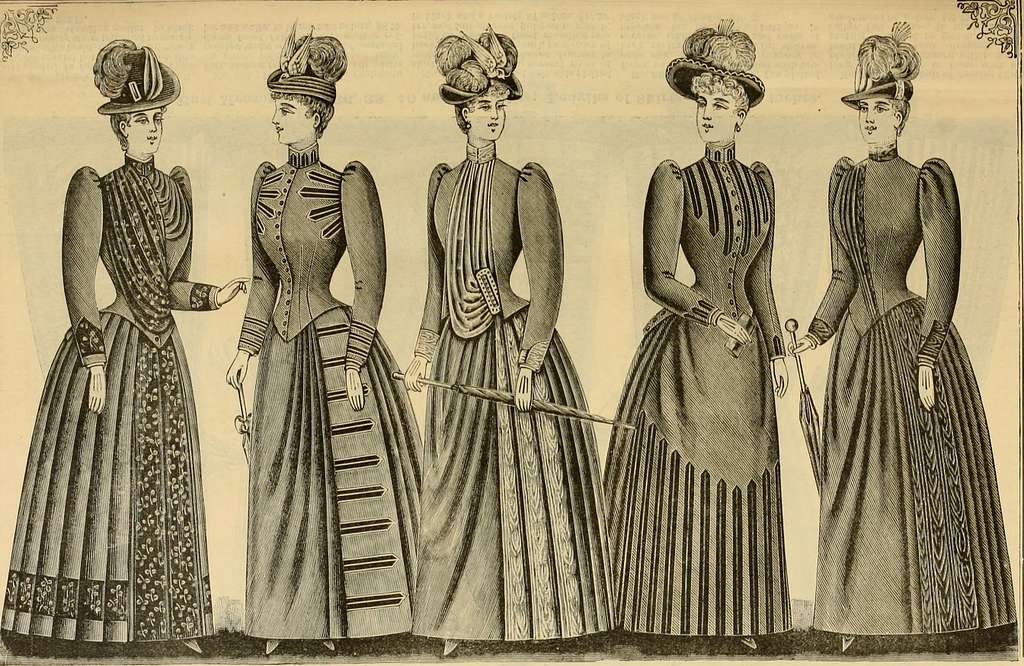The most interesting thing about me is not my hair. It’s not my face, my clothes, or anything else appearance-related. Yet, myself and many others have observed or been told that it is. Girls’ lives should not have to revolve around making themselves look prettier. It’s unfair. Disgusting, even. Though social media plays a big part in young girls’ insecurities, it’s not the sole reason. Instead, there’s a larger underlying one—this is the way society has been forever.
I wasn’t around for peak Britney Spears. Nor for flapper 1920s, or the centuries of corsets, but it’s easy to see what all these eras have in common— fashion designed for a specific body type that only a specific group of women have. This is no dig at Britney herself, only at the low waisted pants wearing super skinny ideal that was prominent at the time. Every so many years, a new style becomes the new trend and consequently, so does a new body type. Gilded age to Victorian to flappers to Marilyn Monroe and so forth, all have different ideas of what the perfect women should look like. It’s an exhausting cycle of not being good enough, of impossible standards for girls, that has existed long before the rise of the 21st century phenomenon of social media. According to a Rolling Stone article written by Abby Monteil, this hustle for perfection was even reflected in the iconic Barbie doll, like the 1965 “Slumber Party Barbie” that came in a set “with a scale permanently set to 110 pounds” along with “a book titled How to Lose Weight, which advised: ‘Don’t Eat!’” I have to add, more than once I’ve heard friends (and enemies) comparing how much they’ve eaten, like it’s some race to zero calories. Pressure to be perfect is omnipresent, and I can’t turn it off by powering down my phone.
Similarly, pretty privilege has practically always existed. It’s not new, it’s not just from social media and unfortunately, it’s not just a preference that people have when they make judgements about people. According to a 2023 Forbes Magazine article by Dr. Mark Travers, physical appearance can affect grades in the classroom. The article writes that “In a 2017 study, female students earned lower grades in online courses than they did in in-person classes” and that “in a 2022 study, the grades of attractive female students declined when offline classes switched to online instruction.” Travers, a psychologist from Cornell University, illustrates the bias that everyone is susceptible to. Even in school environments, where learning should be the priority, appearance can either help or hurt girls’ success. Not only is that wrong, but it’s blatantly unfair. This is not just an internal issue, not just thoughts that someone can have about themselves, even though those are of course harmful. This is a real life consequence of physical appearance overshadowing what should be most important: the actual learning. It’s not caused by social media, just “human nature.” This suggests a larger problem; girls and women are often viewed from the outside only, even if unintentionally, not from the inside and what they are thinking.
However, I understand how modern media (Instagram, Tiktok, etc.) has definitely been accelerating insecurity in girls, and it’s clearly a big part of the problem. But in reality, social media is just a reflection of a society that already had immense pressure on young girls to look a certain way. I think of it like the mirror rooms in fun houses—it just keeps on reflecting the same problem over and over again, but the root of the problem isn’t the room itself. And even if the mirrors were removed, the problem would still exist. Hypothetically, if social media just disappeared, insecurity would still exist and thrive, just like it always has.
To actually get to the root of this problem, many things have to change. It’s not enough just to remove dangerous diets and unrealistic images from Instagram. An entire mindset shift is necessary. That would be difficult, since it’s extremely normalized to judge someone based on how they look (even though that’s not how it should be), but in order to reduce insecurity, the potential judgement must be lifted. A revolution of thought needs to occur, when people are valued for more than how they look and we can all learn to look past conditioned stereotypes of peoples’ appearances.




